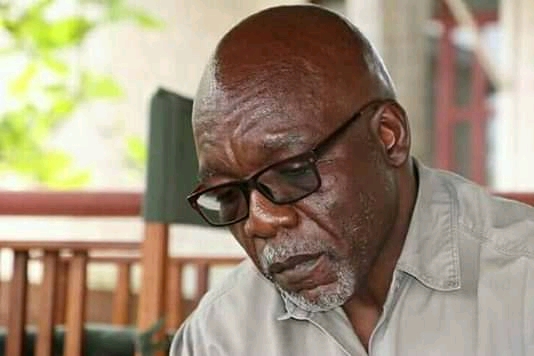By Lillian Akampurira Aujo

As much as this story is set in Kenya, Amin’s 1972 Decree expelling Asians from Uganda spills over into the lives of Lumumba, Odush, Dado, and Mose: Uganda’s economy has fallen so fabric is more expensive, coffee is being smuggled out of Uganda and into Kenya via the railway that the Indians built, Kenya has earned a Safari rally champion in one of the exiled Ugandan Asians but he is not considered Kenyan enough: “The man is not even Kenyan,” Odush snaps, “Just because Amin sent him here doesn’t make him Kenyan.” “So what makes one a Kenyan?” Lumumba wonders. Nationalism and identity are big themes in the novel and play out among Lumumba and his friends as they learn that some people ‘cut’ while others pull out teeth, and some people are just ‘not their people’. The language in the book is crisp and simple enough for young readers. It is peppered with Swahili and Sheng which are characteristic of the diverse Nairobi dwellers.
Lumumba, or Lumush to everyone, is ten years old. He hangs out with his friends Odush, Dado, and Mose by the old Zyphr behind Railway Estate where they live. At the start, they all attend St. Joseph’s the neighbourhood government school. The story is told in Lumush’s observant and deadpan voice.
When Lumush’s father gets promoted to manager, he finds himself walking the tight rope of class-ism because his family becomes eligible to move out of Railway Estate and into a big bungalow up the hill. The promotion also means that he, Lumush, and his younger sister Awino can finally move from St. Joseph’s to the ‘posh’ Hill School. His mother is ecstatic because: “The opportunity to join Hill School does not come every day.” But Lumush remains uneasy because the ‘posh’ school threatens to alienate him from his friends whom he tells: “I am not interested in joining that stupid school.”, although he knows he has no choice in the matter.
Lumush’s thoughts are loud but most times he does not ‘allow them to grow into words’. When he goes shopping with his mother and sister for new uniforms to an Indian shop on River Road, he wonders about and finally comes to a conclusion about the pictures in the shop: ‘Why can’t they have pictures of black kids? Maybe the painter does not know how to paint them. The pictures we draw at school are also of kids with straight hair and pinched noses. It’s easier to draw such pictures because the books we read have such pictures.’
At Hill School, Mr. Bumbles a white man is Lumush’s class teacher. He openly displays his distaste for Lumush whom he calls ‘an interloper’ and warns him: “Import any of your filthy habits to Hill School and you’ll have me to reckon with.” Lumush is quick to notice that the other pupils treat him like Bumbles: ‘It is in the attitude of the other pupils, this interloper thing. It’s in their looks and smiles too.’ However, as events unfold, Lumush manages to make friends and gain some clout among his peers. In the end, he even wins over Bumbles in an unexpected turn of events.
Throughout the novel, Lumush code switches between his two worlds: ‘Sometimes I slip and say things the way I shouldn’t, and when it happens at Hill School everyone looks at me like I crawled out of a sewer. It’s confusing. It’s hard.’ Despite that, he still gets to hang out with his old gang and they go to open-air kungfu movies and periodically sneak out to the haunted white house on Desai Street, where they discover a secret they were not looking to find. Meanwhile, the mysterious occurrences at Hill Estate, the Bedford lorry in the scrapyard, a discarded diary, and an old photograph in the Zyphr, put the boys at the centre of something so sinister that the adults and police have to be called in. In the end, Lumush’s two worlds intersect in a way that surprises not only him and his friends but the entire community.
The novel boasts a colourful cast of additional characters like a dog named Tarzan, a Mau Mau veteran with an eye patch, a man named Tumbo who happens to have a big stomach, a sharp dresser called Stingo, Apima the Changaa brewer, and Zgwembe the homeless boy, among others. Its fast-paced storyline and well-kept secrets are bound to keep both young and adult readers hooked.
Playing a Dangerous Game is published by Norton Young Readers an imprint of W.W.Norton & Company in the US. The book is available online at Norton books.
About the author

Patrick Ochieng is a writer and a lawyer. He was shortlisted for the Golden Baobab writing prize 2010 and longlisted for The Syncity NG 2018 Anniversary Anthology prize and The Short Story is Dead Long Live the Short Story 2019 prize. His work has been published in Munyori Literary magazine, Kikwetu and Brittle Paper among other publications. He lives in the Lakeside city of Kisumu with his lovely wife and two sons.
ABOUT LILLIAN AKAMPURIRA AUJO
Lillian Akampurira Aujo is a poet and fiction writer from Uganda. She is the winner of the Jalada Prize for Literature 2015 and the Babishai-Niwe Poetry Award 2009. She has been shortlisted for the Gerald Kraak Award 2019, the Brittle Paper Anniversary Award 2018, and longlisted for a Nommo Award 2018 (from the African Speculative Fiction Society). She is a 2017 fellow of the Ebedi Residency in Nigeria. She has presented poetry at the 2017 GIMAC meeting in Addis Ababa. Her work has been published by the Caine Prize, Prairie Schooner, Transition, Jalada, Gerald Kraak Award, Babishai-Niwe Poetry Award, Bahati Books, Omenana, Enkare Review, Brittle Paper, and 20:35 Africa, An Anthology of Contemporary Poetry.



